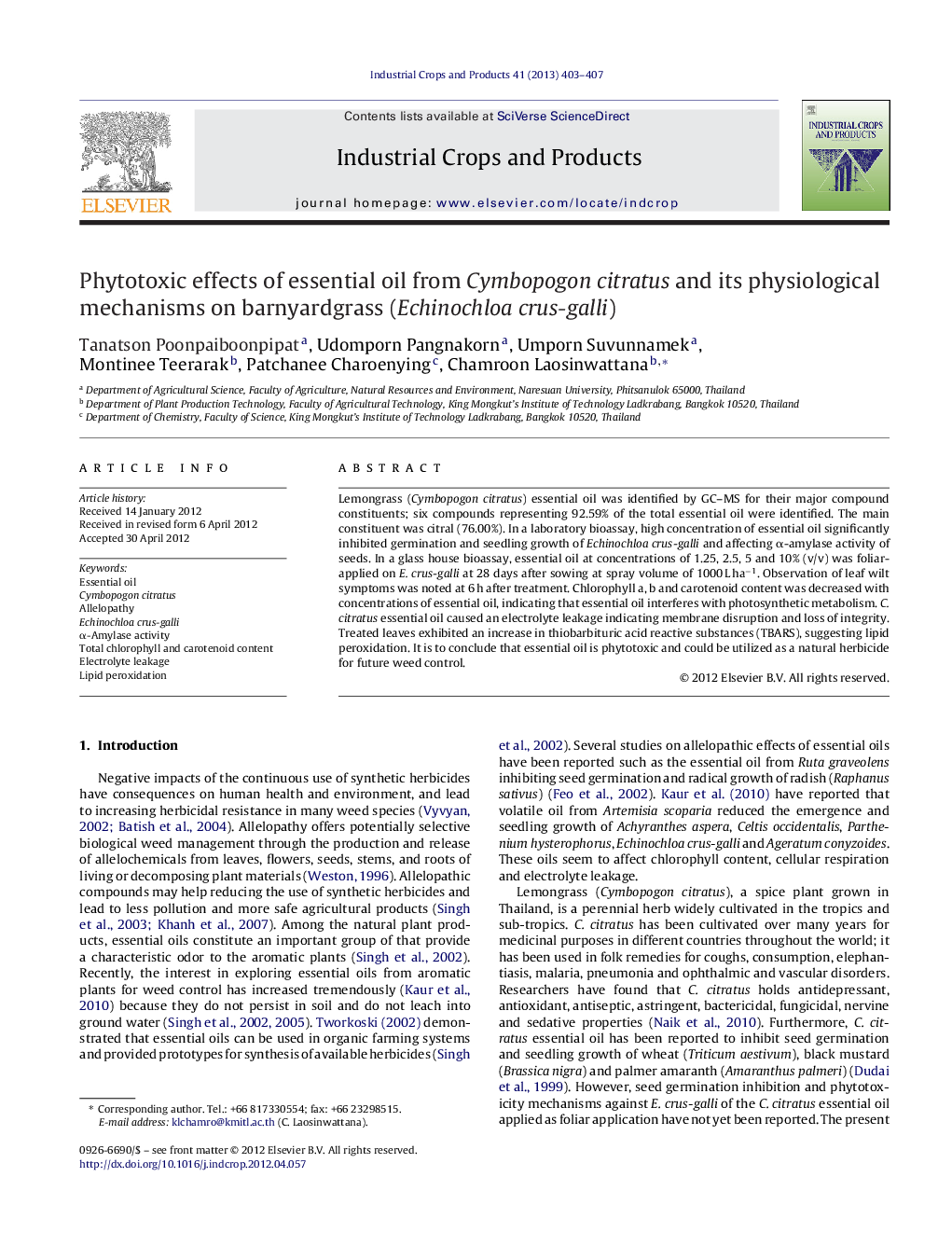| Article ID | Journal | Published Year | Pages | File Type |
|---|---|---|---|---|
| 4513940 | Industrial Crops and Products | 2013 | 5 Pages |
Lemongrass (Cymbopogon citratus) essential oil was identified by GC–MS for their major compound constituents; six compounds representing 92.59% of the total essential oil were identified. The main constituent was citral (76.00%). In a laboratory bioassay, high concentration of essential oil significantly inhibited germination and seedling growth of Echinochloa crus-galli and affecting α-amylase activity of seeds. In a glass house bioassay, essential oil at concentrations of 1.25, 2.5, 5 and 10% (v/v) was foliar-applied on E. crus-galli at 28 days after sowing at spray volume of 1000 L ha−1. Observation of leaf wilt symptoms was noted at 6 h after treatment. Chlorophyll a, b and carotenoid content was decreased with concentrations of essential oil, indicating that essential oil interferes with photosynthetic metabolism. C. citratus essential oil caused an electrolyte leakage indicating membrane disruption and loss of integrity. Treated leaves exhibited an increase in thiobarbituric acid reactive substances (TBARS), suggesting lipid peroxidation. It is to conclude that essential oil is phytotoxic and could be utilized as a natural herbicide for future weed control.
► Six major compounds representing 92.59% of C. citratus essential oil were identified. ► Essential oil inhibited α-amylase activity of E. crus-galli seed germination. ► Foliar application of the oil decreased in chlorophyll a, b and carotenoid content. ► Increasing of lipid peroxidation and loss of membrane integrity caused leaves wilt. ► Essential oil had high potential used as pre- and post-emergence herbicide.
